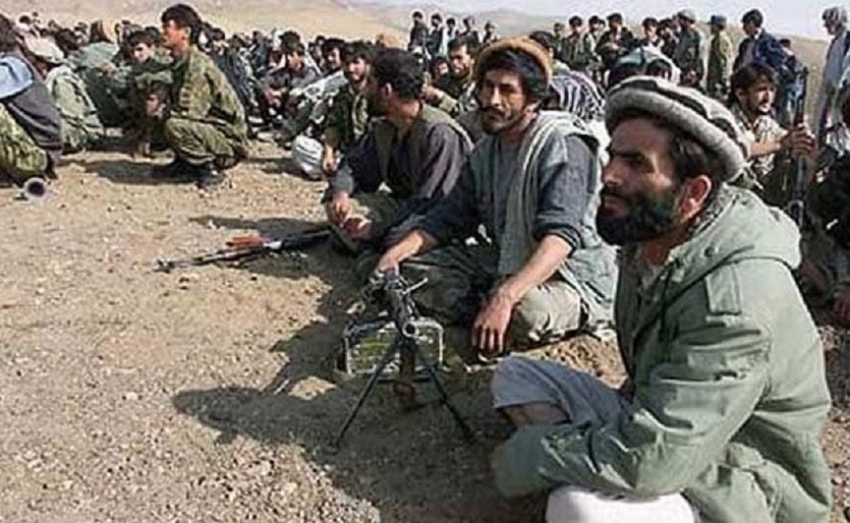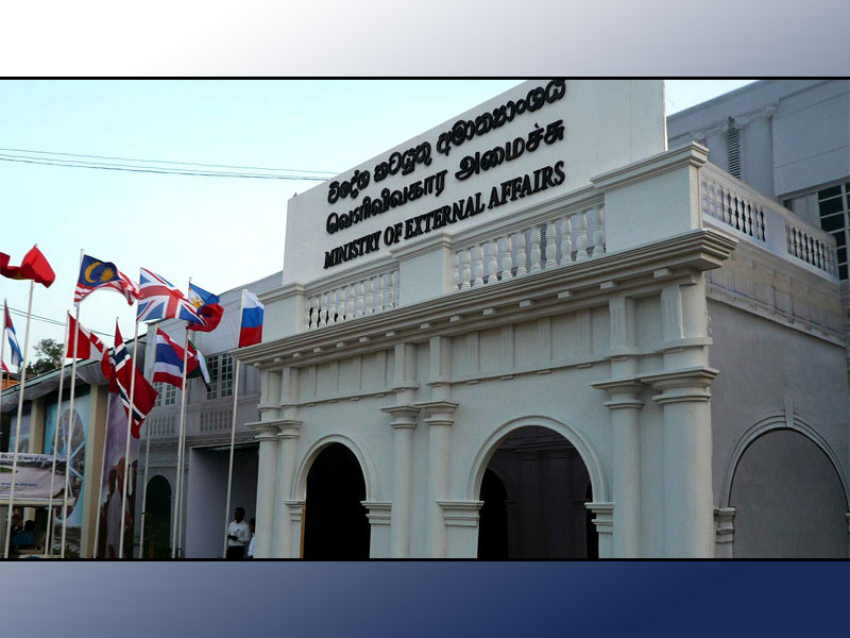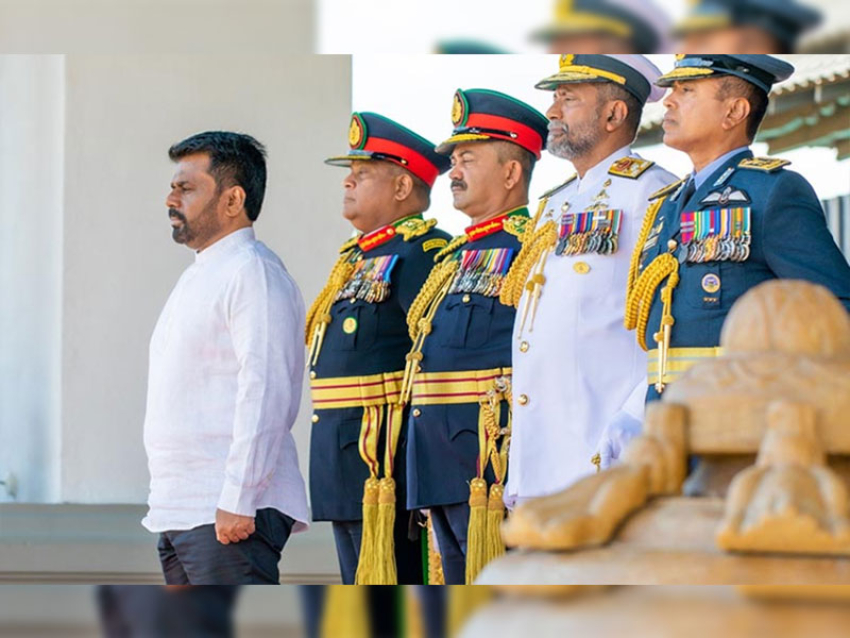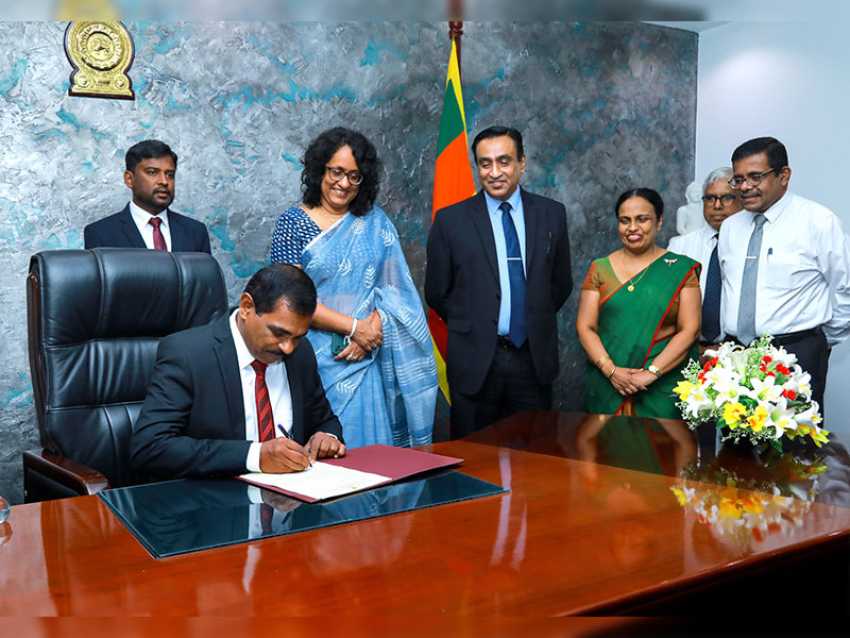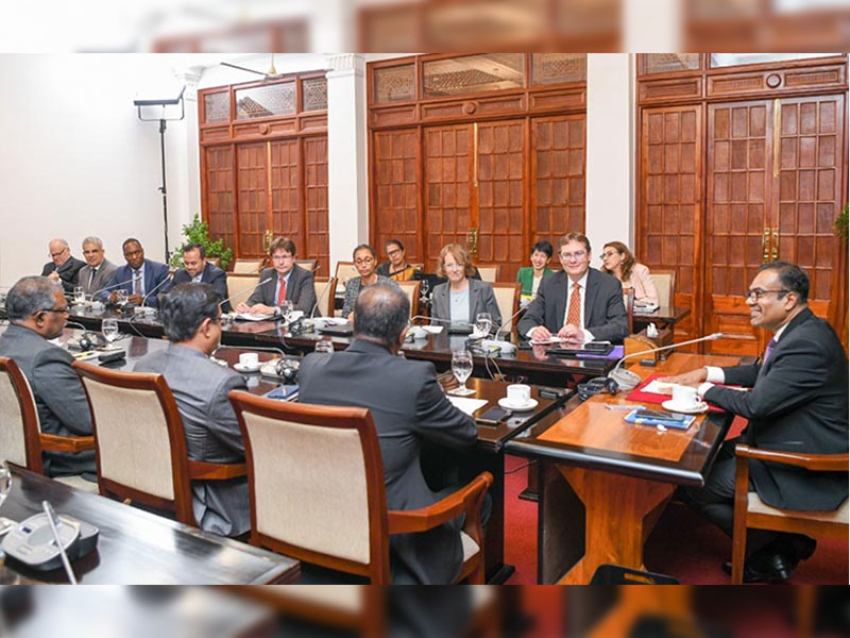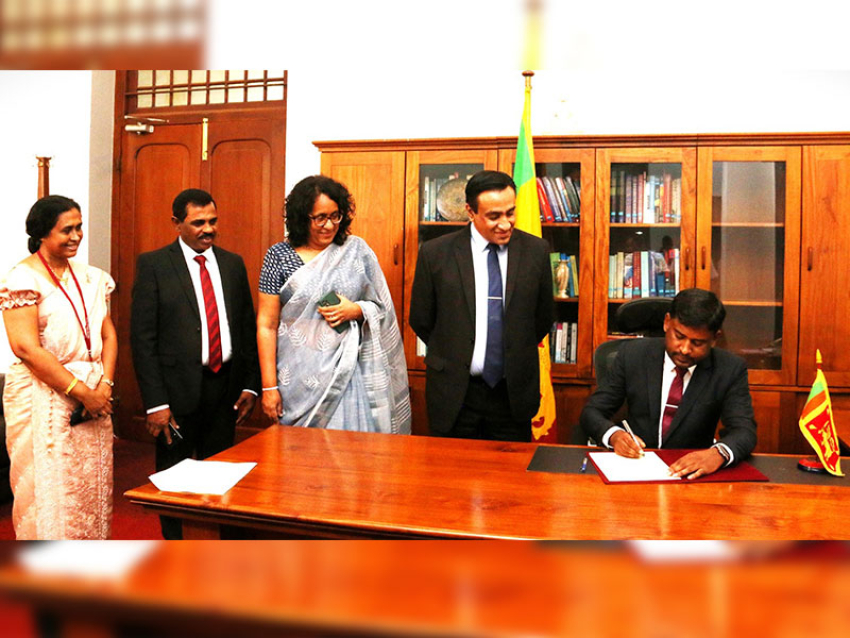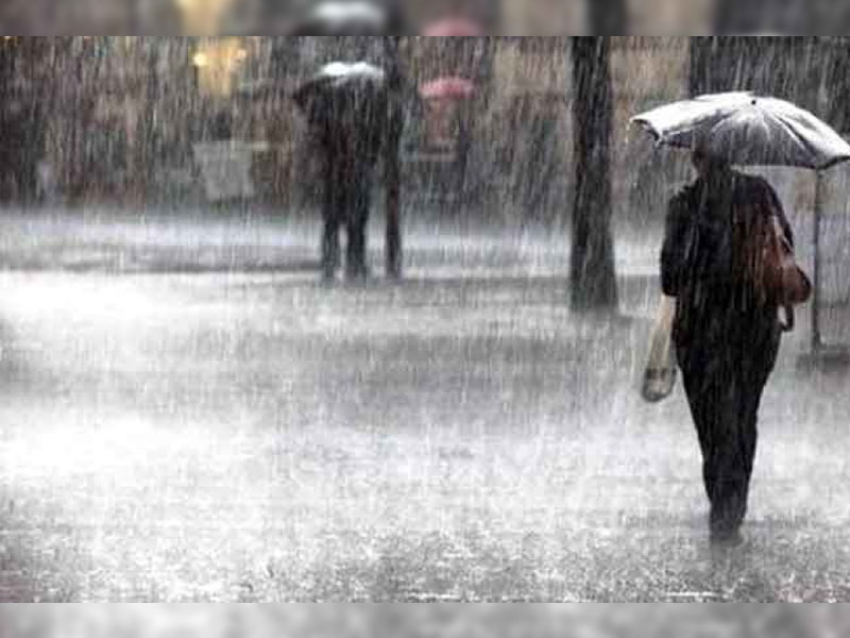The Taliban have told the BBC that their "doors are open" should US President Donald Trump want to resume peace talks in the future.Chief negotiator Sher Mohammad Abbas Stanikzai insisted negotiation remained "the only way for peace in Afghanistan" during an exclusive interview.Mr Stanikzai's words came a week after Mr Trump declared the talks "dead".Earlier this month, the two sides had appeared close to a deal to end the 18-year conflict.Mr Trump had even invited senior Taliban leaders and Afghan President Ashraf Ghani to meet at Camp David on 8 September.But a Taliban attack in the Afghan capital Kabul on 6 September, which killed a US soldier and 11 others, prompted Mr Trump to pull out, saying the group "probably don't have the power to negotiate" if they were unable to agree to a ceasefire during talks.Late on Tuesday, US Secretary of State Mike Pompeo issued a statement condemning recent Taliban attacks, saying the group "must begin to demonstrate a genuine commitment to peace".
Mr Stanikzai dismissed American concerns, telling the BBC the Taliban had done nothing wrong."They killed thousands of Talibans according to them," he told the BBC's chief international correspondent, Lyse Doucet. "But in the meantime, if one [US] soldier has been killed that doesn't mean they should show that reaction because there is no ceasefire from both sides.""From our side, our doors are open for negotiations," he added. "So we hope the other side also rethink their decision regarding the negotiation."
What did the deal include?The full and exact details are not known.
However, Zalmay Khalilzad, Washington's top negotiator, revealed some details of the agreement "in principle" - including the US withdrawing 5,400 troops from Afghanistan within 20 weeks - during a television interview on 3 September.In exchange for the troop withdrawal, the Taliban were willing to pledge that Afghanistan would never again be used as a base for foreign terrorism.Mr Stanikzai told the BBC a ceasefire between the Taliban and foreign troops would have come into effect after the agreement was signed.However, no such ceasefire would have existed between the Taliban and Afghan government forces, he said.
The Taliban - who are now in control of more territory than at any point since US-led forces ousted them in 2001 - do not recognise the legitimacy of President Ashraf Ghani's administration. They have refused to hold direct talks with the Afghan government until a US deal is agreed.Mr Stanikzai said intra-Afghan talks would have started on 23 September, had a deal been reached, and would have included discussions about a wider ceasefire.He also confirmed that the Taliban had approached both Russia and China for help in the peace negotiations.Meanwhile the Afghan national security advisor said that Taliban "intimidation tactics" would not succeed. "The only way they can see peace in Afghanistan is by negotiating with the Afghan government," Dr Hamdullah Mohibt told the BBC.He added: "Open discussions with our neighbours, those who are sponsoring and supporting the Taliban - that needs to be at the front of our discussions, not the back of it."
What is the security situation in Afghanistan? An average of 74 people were killed every day in the country in August, according to data collected by the BBC.Without a deal, attacks are continuing unabated. Two suicide bombers on Tuesday left at least 48 people dead. Medical staff said children were among the casualties at an election rally targeted by one bomber. President Ghani had been due to speak ahead of elections later this month.Both attacks were claimed by the Taliban.
A man who was injured in one of two suicide attacks on Tuesday However, when pressed on the high civilian death toll, Mr Stanikzai blamed "foreign forces", citing United Nations statistics which show more civilians were killed by Afghan and US forces in the first half of 2019 than by insurgents. He also defended the Taliban for taking shelter in civilian homes, and refused to be drawn on the many direct Taliban attacks which had killed ordinary men, women and children.
Afghanistan war: Tracking the killings in August 2019
16 September 2019
BBC research shows civilians continue to suffer disproportionately An average of 74 men, women and children were killed every day in Afghanistan throughout the month of August, the BBC has found.The findings show unrelenting violence affects almost the entire country as US negotiations to withdraw after 18 years of war are in disarray.We confirmed 611 security incidents in which 2,307 people died.Both the Taliban and Afghan government have questioned the validity of the casualty figures identified by the BBC.Most people killed were combatants - including more Taliban fighters than expected - but a fifth were civilians.A further 1,948 people were injured.
The casualty toll is just a snapshot of the situation on the ground in Afghanistan. However, it paints a bleak image as US President Donald Trump looks to fulfil a key foreign policy aim and withdraw American troops.Just more than a week ago, President Trump cancelled year-long peace negotiations between the Taliban and United States, although a return to talks is not ruled out.A ceasefire, however, was never on the table, and hundreds of Afghans are still dying each week. There are fears that violence will worsen ahead of presidential elections due at the end of the month.
92 people were killed and 142 injured when IS bombed a wedding in Kabul
Who is most affected?The Taliban have never been more powerful since 2001, but their fighters account for nearly half of all deaths confirmed by the BBC for August - a huge number, which comes as a surprise.There may be a number of factors for this, including the fact the Taliban have been on the offensive during peace talks, and US-led forces have increased air strikes and night raids in response, killing many Taliban as well as civilians.How many fighters the Taliban has lost in recent years is not known. It's thought they may have about 60,000 men under arms.In a statement the Taliban said it strongly rejected "the baseless allegations" of the killing of 1,000 fighters in the past month, adding that there was no document that could prove "casualties to that scale".It described the BBC's report as "based on the daily propaganda of interior and defence ministries of Kabul administration".Afghan security force casualties are top secret - so our own confirmed counts for August may still be lower than reality. In January Afghan President Ashraf Ghani said 45,000 members of the security forces had been killed since late 2014.The Afghan Ministry of Defence said the research needed "a serious review and a more serious research based on ground realities must be conducted".The BBC confirmed that 473 civilians had been killed and 786 injured in August.
"The conflict has a devastating impact on civilians," says Fiona Frazer, human rights chief for the UN mission in Afghanistan (UNAMA)."United Nations data strongly indicates that more civilians are killed or injured in Afghanistan due to armed conflict than anywhere else on Earth."Although the number of recorded civilian casualties are disturbingly high, due to rigorous methods of verification, the published figures almost certainly do not reflect the true scale of harm."The US and Afghan militaries routinely deny or fail to report civilian casualty figures.
Most fighting in Afghanistan is close-range conflict between government forces and TalibanTheir casualty data for 2019 shows Afghanistan maintaining that position. Fatalities in August in Afghanistan are three times higher than either Syria or Yemen, according to ACLED data.And in June 2019, Afghanistan was named the least peaceful place in the world by the Global Peace Index report.
The BBC collected more than 1,200 reports of violent incidents in Afghanistan between 1-31 August 2019.BBC Afghan journalists traced every reported incident, from those that often wouldn't make it to news headlines to major attacks. To verify reports and chase up tip-offs, the BBC used its extensive on-the-ground team to contact multiple sources across Afghanistan including government officials, health workers, tribal elders, local residents, eye witnesses, hospital records and Taliban sources. A minimum of two reliable sources was required to confirm an event. Confirmed casualties from hospital reports were considered reliable even without secondary sourcing.Only the lowest-confirmed casualty counts were recorded. If a range of casualties was given (eg 10-12), the minimum figure was considered the most reliable. If multiple sources provided conflicting figures for an incident, the minimum reliable number was included and the rest dropped. As a result, hundreds of reports were excluded and the true number of attacks and casualties could be much higher.
Afghanistan war: What could peace look like?
By Dawood Azami
The Taliban now control more territory in Afghanistan than at any point since 2001For the first time in 18 years, the US government seems serious about withdrawing its forces from Afghanistan and winding up the longest war in its history.Since October, US officials and representatives of the Taliban have held seven rounds of direct talks - aimed at ensuring a safe exit for the US in return for the insurgents guaranteeing that Afghan territory is not used by foreign militants and won't pose a security threat to the rest of the world.A US-led military coalition drove the Taliban from power in 2001 for sheltering al-Qaeda, the militant group behind the 9/11 attacks.A rare consensus about resolving the conflict peacefully, both inside and outside Afghanistan, means peace has never been so close. During a visit to Afghanistan in late June, US Secretary of State Mike Pompeo said the Trump administration was aiming for "a peace deal before September 1st".But the US-Taliban talks in Qatar's capital, Doha - as well as intra-Afghan dialogue involving the insurgents and some Afghan officials - are only the first phase of a complicated process with an uncertain outcome - and there are many hurdles to overcome.
While the US has reversed its refusal to talk directly to the Taliban, intense fighting and unprecedented numbers of airstrikes by the US and Afghan militaries are still going on all over the country. And while the Taliban negotiate they now control and influence more territory than at any point since 2001.The war in Afghanistan is now the deadliest conflict in the world, causing more casualties than the fighting in Syria, Libya or Yemen.Patterns of violence have changed dramatically in recent years. The vast majority of those being killed and injured now are Afghans - civilians, police and soldiers, and Taliban fighters.In January, Afghan President Ashraf Ghani said more than 45,000 members of the country's security forces had been killed since he became leader in late 2014. Over the same period "the number of international casualties is less than 72", he said.In February, the UN said civilian deaths reached a record high in 2018. It said more than 32,000 civilians had in total been killed in the past decade.Taliban fighters are also regularly killed in large numbers in airstrikes, night raids and ground fighting.Given the continued stalemate with the insurgents, US President Donald Trump is keen to end the war, which, according to US officials, costs about $45bn (£34bn) annually. His indication to withdraw most or all of his 14,000 forces in the near future caught everyone by surprise, including the Taliban.There are also nearly 1,000 British troops in Afghanistan as part of Nato's mission to train and assist the Afghan security forces.
President Trump is considering withdrawing many of the US troops still in AfghanistanBut even if the US and the Taliban resolve their major issues, the Afghans themselves will need to sort out a number of key internal issues - including a ceasefire, dialogue between the Taliban and the government, and most importantly, the formation of a new government and political system.Ideally, a ceasefire would precede presidential elections later this year and the Taliban would take part - but the latter seems unlikely.Without a full or even partial ceasefire, there are fears that poll irregularities and a possible protracted political turmoil over the results could undermine any peace process and may increase political instability.Can power be shared, and if so how?There are a number of options and scenarios.First of all, a decision will need to be taken by all major players on whether presidential elections, already postponed to late September, take place as planned.
The Afghan women determined not to lose out in Taliban talks
Will negotiations lead to peace in Afghanistan?If they do, a new government in Kabul could negotiate terms with the Taliban, unless a peace deal had been reached before the vote. Whether that government served a full term or held power on an interim basis while intra-Afghan power-sharing options were discussed is unclear.But elections could also be further delayed or suspended - and the current government's term extended - while a mutually agreed mechanism to establish a new government, acceptable to all sides including the Taliban, is sought.Will the Taliban end up back in government?Creating a temporary neutral government or a governing coalition, that could even include the Taliban, is another option being looked at in this scenario.A loya jirga - or grand assembly - of Afghans could also be called to choose an interim government which would hold elections once US troops have left and the Taliban has been reintegrated.Media captionThe BBC was given exclusive access to spend a week with ambulance workers in Afghanistan.An international conference similar to the one in Bonn, Germany, in 2001 is another suggestion to help chart a future course for the country.It would include Afghan players, major powers and neighbouring states - but this time also with the participation of the Taliban.
Several Taliban leaders have told me they need time to enter mainstream Afghan society and prepare for elections.
Would former enemies be able to work together?There will be very difficult issues to surmount after a conflict that has left hundreds of thousands of casualties on all sides, including government forces, insurgents and civilians.For example, the Taliban do not accept the current constitution and see the Afghan government as "a US-imposed puppet regime".So far President Ghani's administration has not been involved in direct talks with the insurgents who refuse to talk to a government they don't recognise.The Taliban have dismissed the government of Ashraf Ghani as a puppet of the US
Therefore, given the internal rivalries and diverse agendas of various local actors, the intra-Afghan phase of the peace process might prove more fficult than the US-Taliban talks.
However, there are positive signs.Two rounds of intra-Afghan dialogue took place in Moscow earlier this year when Afghan politicians including ex-president Hamid Karzai, former commanders and civil society members, including women, met Taliban representatives to discuss ending the war.Why Trump's Afghan comments are bad historyWhat a private security companies doing in Afghanistan?How do the Taliban make money?
World Powers Jostle in Afghanistan's New 'Great Game'A third such meeting took place in Doha in July, in which several officials currently serving in the Afghan government also participated, albeit in a "personal capacity". It is hoped that such meetings will eventually pave the way for formal peace talks between the Taliban and other Afghans, including the government.A number of Afghans fear that sharing power with the Taliban could see a return to the group's obscurantist interpretation of Islamic justice. They are concerned that various freedoms, notably certain women's rights, could be lost.The Taliban banned women from public life when they were in power in the 1990s, and their punishments included public stoning and amputations.
What if talks don't lead to peace?Since the Soviet invasion of Afghanistan in 1979, there has been a long list of unfulfilled agreements and failed attempts aimed at ending the war in the country.Media captionAt least 45,000 Afghan police and soldiers have died over the past four years
Several scenarios from the past could be repeated this time round.A US pullout, with or without a peace deal, might not automatically result in the sudden collapse of the government in Kabul.The war could continue and the government's survival would largely depend on financial and military assistance from foreign allies, especially the US, and the unity and commitment of the country's political elite.When Soviet forces withdrew in 1989, the Moscow-backed government in Kabul lasted for three years.
The Taliban are still openly active in about 70% of AfghanistanBut its collapse in 1992 ushered in a bloody civil war, involving various Afghan factions supported by different regional powers.If issues are not handled with care now, there is a risk of a re-run of these two scenarios.The Taliban, who emerged out of the chaos of the civil war, captured Kabul in 1996 and ruled most of Afghanistan until the US-led invasion removed them from power in 2001.They could try to capture the state again if a deal is not reached this time round, or one fails.What would chaos look like?
The current peace efforts could see the Taliban participating in a new set-up in Afghanistan.This would mean the end of fighting and the formation of an inclusive Afghan government - a win-win for Afghans, the US and regional players.But the alternative is dire - a probable intensification of conflict and instability in a country strategically located in a region with a cluster of major powers including China, Russia, India, Iran and Pakistan.Taliban threaten 70% of Afghanistan, BBC findsWhy Afghanistan is so dangerousHow Qatar came to host the TalibanAnother round of chaos could well result in the emergence of new violent extremist groups.Afghans and the rest of the world would have to deal with a possible security vacuum in which militant groups such as al-Qaeda and Islamic State found fertile ground.Increased production of drugs and the overflow of refugees would pose serious challenges not only to Afghanistan but also to the whole region and the rest of the world.
How could it be avoided?History shows that starting negotiations and signing deals does not guarantee that conflicts will be peacefully resolved.These steps are only the beginning of a complicated and challenging process - implementation of what's on paper is even more important.The biggest challenge for Afghanistan would be the creation of verifiable enforcement mechanisms in any post-deal scenario.The Taliban have had a political office in Doha since 2013Given the history of conflict in the country, the current opportunity could be easily squandered if the process is taken in the wrong direction by one or more of the local or foreign actors.Therefore, international guarantors and a framework involving the region and the key international players are needed to co-ordinate efforts for peace and deter and prevent spoilers from sabotaging the process.There's a rare opportunity to resolve four decades of war - handle it with care, or risk facing the consequences.
The "Guantanamo Five" were released by the US without being charged with any terror-related crime
The 14-member Taliban negotiating team also features the "Guantanamo Five" - former high-ranking officials captured after the fall of the regime and held for nearly 13 years in the controversial US detention camp.They were sent to Qatar in a 2014 prisoner exchange involving Bowe Bergdahl, the US soldier captured by insurgents in 2009.Freed Taliban five to choose war or peace
They are (clockwise from top left in photo above):Mohammad Fazl - the Taliban's deputy defence minister during the US military campaign in 2001
Mohammad Nabi Omari - said to have close links to the Haqqani militant network
Mullah Norullah Noori - a senior Taliban military commander and a former provincial governor
Khairullah Khairkhwa - served as a Taliban interior minister and governor of Herat, Afghanistan's third largest city
Abdul Haq Wasiq - the Taliban's deputy head of intelligenceSher Mohammad Abbas Stanikzai, a senior Taliban political figure and former head of its political office in Qatar, is leading the group's negotiating team.In an interview with the BBC in February, he said a ceasefire would not be agreed until all foreign forces were withdrawn from Afghanistan.Also present in Qatar is Mullah Abdul Ghani Baradar, the Taliban's deputy head for political affairs and one of the group's co-founders, who was released from prison in Pakistan last October after spending nearly nine years in captivity.

